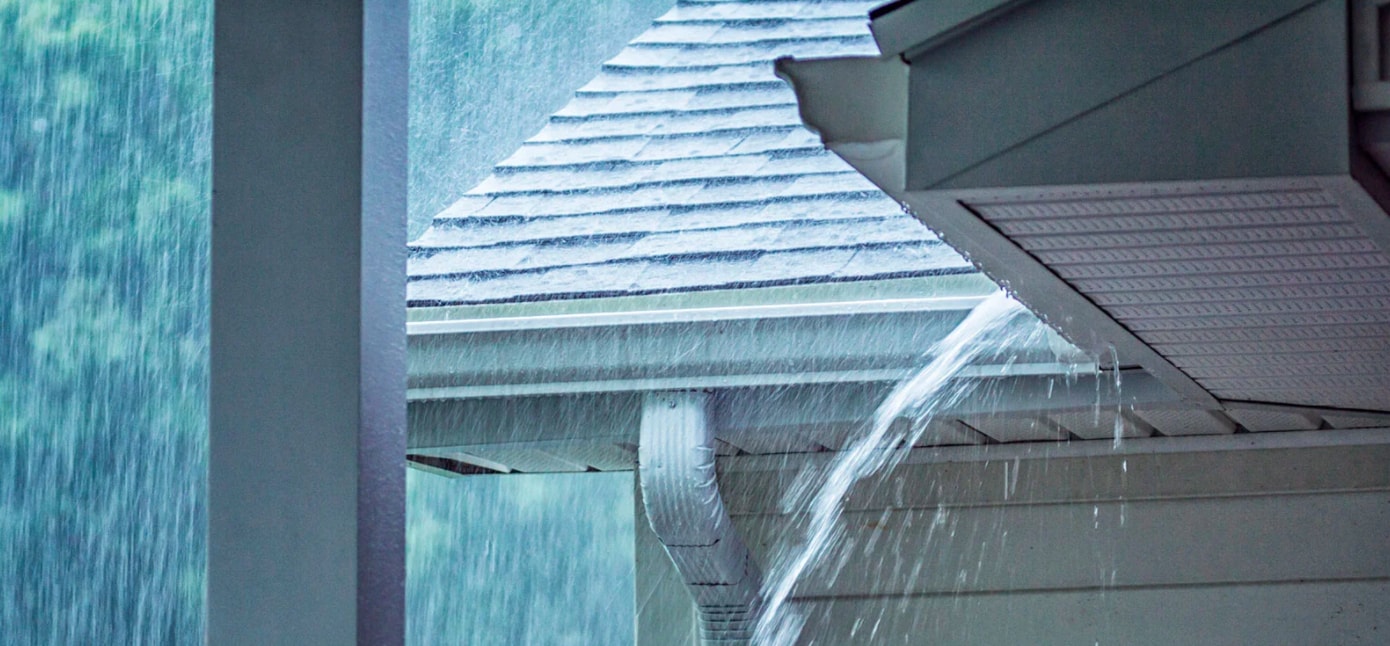
10 Common Causes of Roof Leaks
A leaking roof can spell disaster for your interior design and decoration, telltale damp patches on ceilings or at the top of the walls in upstairs rooms is not a problem that is going to go away by itself.
Roof leaks are surprisingly common and the roof doesn’t have to be old or in poor condition to develop a leak either. Knowing what to look out for and where problems might occur is an important element of your roof maintenance. Here are 10 of the most common causes of roof leaks.
- Blocked guttering – this is one of the most obvious areas for a roof problem and one of the easiest to fix. Leaves and other debris can accumulate in the rainwater goods over the months particularly if you are surrounded by trees. Rainwater that cannot be collected from the roof pitch and travel away will start to pool and pond and can seep through small cracks and holes which would otherwise not have caused a problem. Gutters should be cleared twice a year usually spring and autumn and inspected regularly for breaks or cracks and any unexpected blockages like birds’ nests
- Skylights or roof lights – roof lights like Velux windows need to be professionally installed otherwise they will become a natural target for rainwater. Ingress of water is usually easy to spot in the room below. The two main causes for this are incorrect installation or wear and tear over time - a deterioration in the insulation and sealing which connects the skylight to the main roof structure including the metal flashing
- Cracked flashing – flashing is the term given to the pieces of flat metal which are put on roof joints, for example around chimneys or skylights, to create a watertight seal. If they crack then it becomes easier for water to penetrate and once cracked, these cracks will only get larger over time as rainwater seeps underneath and then freezes and expands in the colder months
- Broken shingles – cracked or missing slates or roof tiles will lead to water penetration and these are repairs which should be undertaken as soon as they are spotted. Slates and tiles can fall due to age but storms, when there are significant wind speeds, can also be responsible for lifting roofing material
- Sealing deterioration on valleys – the valleys on your roof are like gulleys where two roof planes come together and are a particularly vulnerable point for rainwater which can accumulate and cascade down like a waterfall during bad weather. Valleys are usually protected by metal flashing. Incorrect fitting or just deterioration and age over time are the two most usual causes for water leaks
- Cracked vent booting – roof vents are small vertical pipes which protrude from the roof and are used to expel moisture from the roof void or room below. These are usually sealed by metal flashing with a fitted rubber seal over the top called a boot. Either the flashing or the rubber can be prone to degradation over time or a more recent leak could be the result of faulty installation
- Ice Dams – in prolonged periods of cold weather, ice dams can build up on the edge or a roof which prevent drainage. Any heat escaping from the house can cause some snow on the roof to melt despite the very cold external temperatures. The melting water runs from the roof to the exterior edge where it re-freezes forming an ice dam. A tool called a roof rake which has a super long handle and an angled shovelhead at the end can carefully remove snow and ice from the roof and help prevent ice dams from forming
- Cracked chimney – the vulnerable point is where the chimney connects with the roof and cement and mortar can erode, fracture and crumble over time allowing water to penetrate. Metal flashing can also crack and lift and loosen and roof tiles and slates at the junction with the chimney may be more vulnerable to cracks and breaks
- Condensation in the attic or loft – if water has got into the roof space from a leak then mould and mildew can develop, easy to spot as it has a very strong musty odour. The roof space is the border territory between the heat of your home and the colder outdoor temperatures so it can be easy for condensation to build up creating damp patches and staining
- Damage caused by activity on the roof- it is easy to cause damage when accessing the roof for maintenance or other work including repairs. Roof structures are potentially quite fragile and its surprisingly simple to crack a tile or slate or damage a seal. Roofing works are best undertaken by professionals who have the requisite skill and expertise plus the right equipment to work safely at height
Keeping your roof in good order will minimise the chances of a leak developing which can prove costly not just in terms of repair but also restoring any damage that has occurred internally to decoration and furnishings. Lack of maintenance or failure to address repairs when they are needed will likely cause more serious problems in the long term and end up in higher roof leak repair costs. A traditional tiled or slate roof which is properly installed and well cared for should last for decades with just a simple programme of routine maintenance.
Repairs or storm damage should always be carried out promptly and preferably by a professional roofer. Small repairs are not usually that expensive but if left, can potentially cause more serious problems and cost down the line. Your roof is an important and valuable part of the fabric of your home and often overlooked by homeowners as part of their refurbishment and maintenance plans until a problem does arise.

